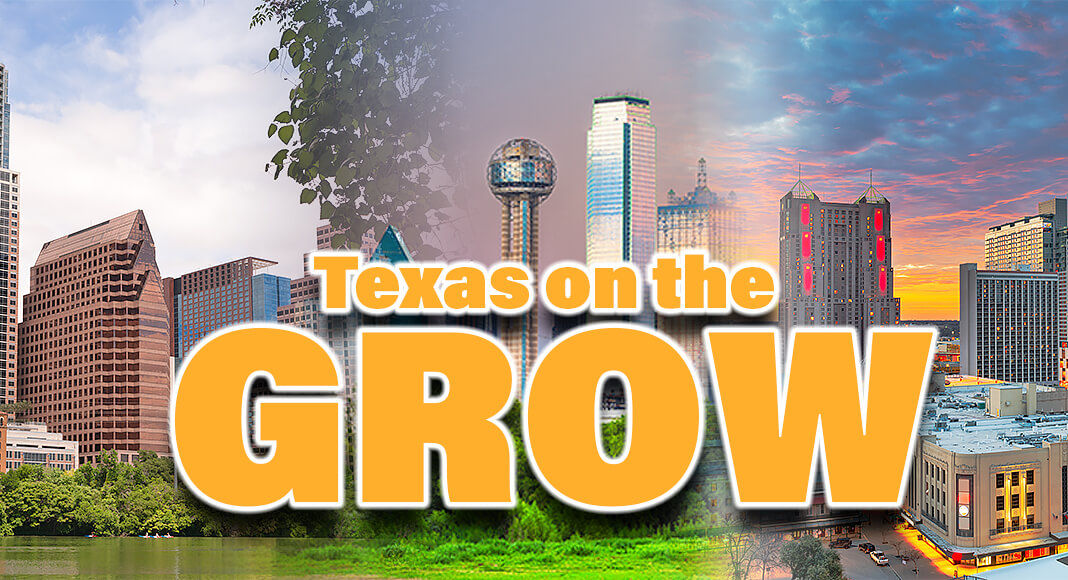
Texas Border Business
The seven largest metropolitan areas in Texas drive the overall pace of growth, accounting for nearly eight of every 10 net new jobs. Looking ahead over a long-term forecast horizon (through 2050), this pattern appears likely to persist. Let’s take a brief tour of the highlights of our latest projections.
Through 2050, our analysis indicates that the fastest growing population centers as measured by job gains will be the Austin-Round Rock-Georgetown Metropolitan Statistical Area (MSA) and the Dallas-Plano-Irving Metropolitan Division (MD). In each of these regions, diverse and dynamic economies are expected to expand in both traditional and emerging sectors, and we are projecting that wage and salary employment will increase at a 1.57% annual rate, significantly faster than the overall state pace of 1.41%.
For the Fort Worth-Arlington-Grapevine MD, broad-based expansion is expected to generate jobs at an annual rate of 1.45%. The McAllen-Edinburg-Mission MSA economy is also progressing impressively, with employment expansion projected to be 1.45% per year. The Houston-The Woodlands-Sugar Land MSA is the largest Texas metro area, comprising 24.33% of the state’s total population; we are anticipating a 1.41% annual employment increase for that area.
The San Antonio-New Braunfels MSA is expanding at a notable pace, but is slightly below the statewide rate of job growth; the forecast annual rate of escalation in employment is 1.35%. Modest economic expansion is projected for the El Paso area through 2050, with job gains at a yearly rate of 1.17%.
In addition to the large urban centers, the state’s smaller metropolitan areas are sources of notable business activity, both now and for the foreseeable future. Wage and salary employment expansion in several of these MSAs is forecast to match or exceed the state’s annual growth pace of 1.41% through 2050, including Tyler (1.54%), Brownsville-Harlingen (1.50%), Sherman-Denison (1.44%), and Midland (1.41%).
Our job growth rate projections through 2050 for the remaining MSAs include Odessa (1.39%), Waco (1.36%), College Station-Bryan (1.33%), Lubbock (1.32%), Laredo (1.30%), Longview (1.30%), Texarkana (1.29%), Corpus Christi (1.25%), Abilene (1.23%), Amarillo (1.21%), Killeen-Temple (1.21%), Wichita Falls (1.21%), San Angelo (1.15%), Beaumont-Port Arthur (1.13%), and Victoria (1.05%).
Business disruptions and unforeseen challenges are inevitable in our complex and dynamic economy, but our long-term outlook calls for economic expansion in each of the state’s metropolitan statistical areas. The largest population centers will lead the way, but smaller cities and rural areas will also contribute significantly to the state’s overall performance. This outlook is a testament to the diversity of this massive state that seems to have a little bit (in many cases, a lot) of everything.
All of us at The Perryman Group wish you a joyous holiday season and all the best in the coming year. Stay safe!
_______________________
Dr. M. Ray Perryman is President and Chief Executive Officer of The Perryman Group (www.perrymangroup.com), which has served the needs of over 3,000 clients over the past four decades.














